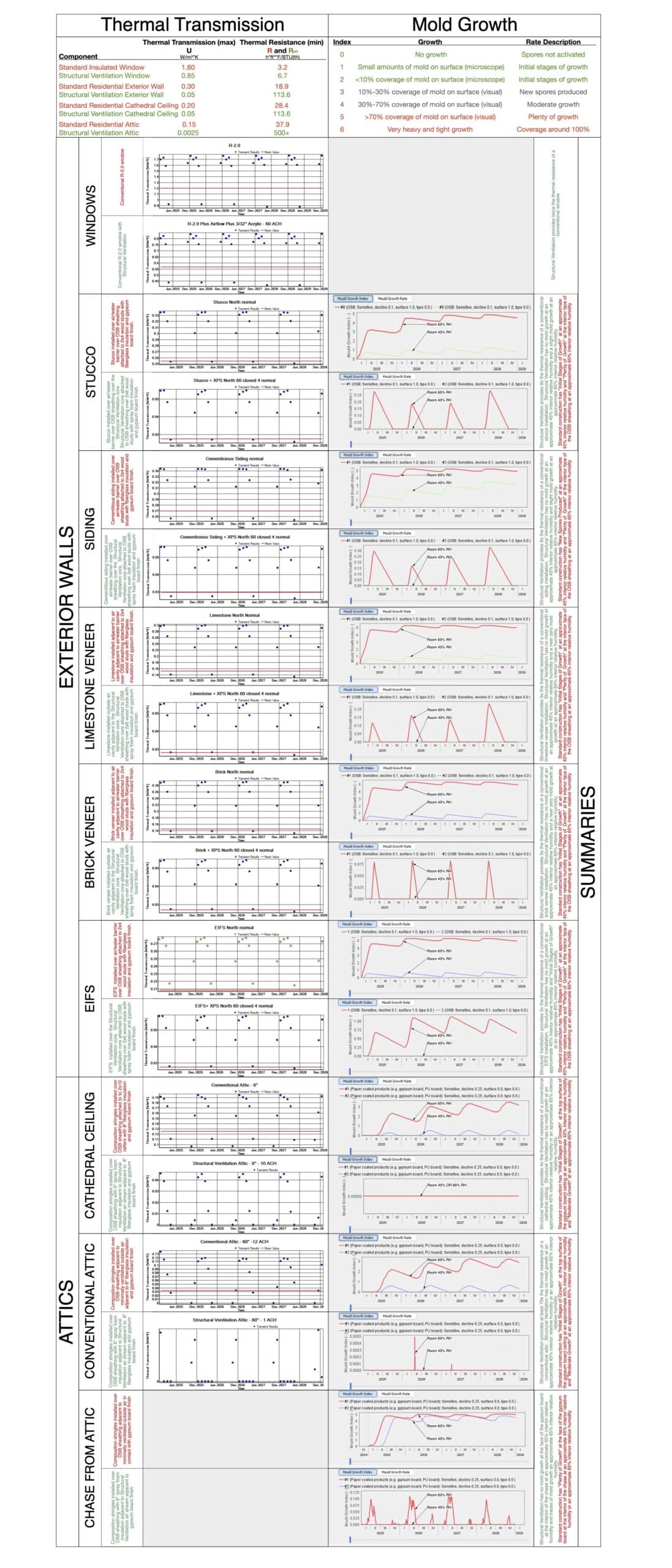How Good is Structural Ventilation of the Building Envelope?
- Significantly minimizes thermal and moisture transmission through the building envelope which results in reduced energy requirements
- Significantly minimizes mold growth within the structure and building envelope which results in improved indoor air quality
- Significantly minimizes rot, deterioration, and corrosion of the structure and building envelope which results in improved sustainability
This means:
- Sick Building Syndrome is avoided
- Sickness from mold exposure is negated
- Mold in walls is essentially eliminated
- Mold in attics is essentially eliminated
- Mold in floors is essentially eliminated
- Mold remediation is history
- Utilizing a Dedicated Outdoor Air System (DOAS) to supply outdoor air, at a predetermined temperature and humidity, into the structure and maintain a slight positive indoor pressure
- Utilizing the ancillary HVAC system to circulate the DOAS supplied air and to provide heating and cooling during extreme conditions
- Allowing the pressurized air to flow into the cavities of the building envelope at the perimeter walls and windows via the air cavities of the attic and floor framing
- Windows – 3x
- Perimeter Walls – 6x
- Attics with outside air ventilation – 6x or more
Energy improvements outweigh the benefits of ERV’s.
Construction is performed with existing labor and readily available components.
The system and assemblies are patented.
Ok – But, How Good is Structural Ventilation of the Building Envelope?
See below.
The left side relates to thermal transmission of the building envelope.
Constructions and assemblies are identified at the far left. Conventional constructions are red. Structural Ventilation constructions are green.
The table at the top is a summary of the charts below. The red values relate to standard construction and the green values relate to Structural Ventilation. The U values are the greatest values of thermal transmission from the charts below. The R and Rht, the conventional and hygrothermal resistances, are derived from the U values. Structural Ventilation assemblies are significantly more energy efficient.
The right side relates to mold growth within the building envelope utilizing VTT methodology. Analyses were performed based upon interior room temperatures in the low 70’s and relative humidities of 45% and 65%. The table at the top identifies the mold indices of the curves in the charts. Mold indices less than 3 are preferred. The green indices are indications of less mold as compared to the other indices. Structural Ventilation assemblies have significantly lower mold risks.
Summaries of the results are provided at the far right.
Of interest is the Chase From Attic analysis that shows mold growth at open chases from attics to conditioned spaces. See Evils of the Attic.
Click here to download a high resolution pdf of the illustration below.

Vacek LLC, formerly Vacek Group, is a Houston area structural and architectural engineering company established in 1994. The company offers years of experience to insurance companies, attorneys, architects and the private sector.


